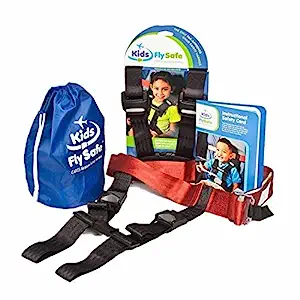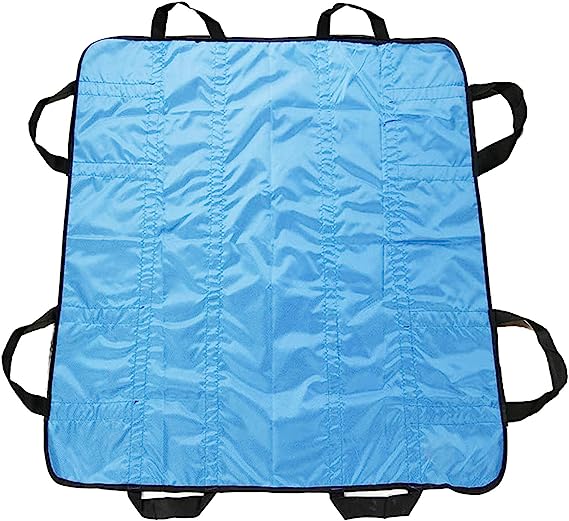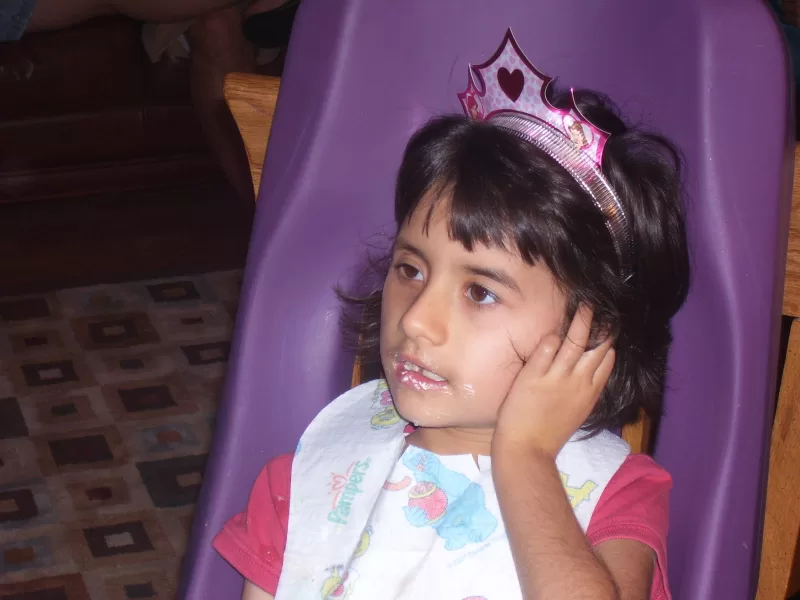If you are talking about traveling, I have no problem butting into your conversation! I love to hear about people’s trips and swap tips. During my daughter’s Miracle League baseball game last week, I talked to another mom about their Make-A-Wish trip to Disney World. I could easily talk about Disney all day, but she had some questions and concerns about flying with her child with a disability. She had questions about the logistics of navigating the airplane and had heard conflicting information about what she needed to do.
In our conversation, I found out that there’s a lot of incorrect information about flying with a physically disabled person and the process of getting on and off the plane. My experiences have overwhelmingly been good, but it can still cause me some anxiety and stress when we fly with our daughter who has severe impairments. If you have a loved one with a disability and need some tips on flying, check out this article.
Do I need a car seat?
It is not required, but bring one if you will need a car seat at your destination. If you use a car seat on the plane, please make sure it is FAA approved. If it is not, the airline may restrict your use of it, meaning you can’t use it during takeoff and landing. Even if you need a car seat at your destination, skip it on the plane because they are bulky and airplanes are crowded. You can check the car seat so you have it at your destination but don’t have to carry it around with you.
We never used a car seat when flying with Reagan because there were so many other things to keep track of like food pump, medications, bag of supplies…a bulky car seat never made the cut!
What can I use if my child needs more support than a lap belt on the plane?
Airlines must allow a child (under 18) to use an FAA-approved restraint system. That doesn’t mean a car seat is your only option. CARES airplane harness is approved for children 22-44 lbs. and up to 40 inches in height to use on an airplane. It has a strap that slides over the seat back and then a 5-point harness to secure your child. It is lightweight and portable. If your child is under 44 lbs., the airline must allow you to use this on any seat and you do not need to notify them ahead of time. Though, it is always helpful to let them know. Please be aware that you can’t use this harness in a car, but the FAA approved it for all stages of a flight if your child’s weight is under 44 lbs.

If your child is over 44 lbs. and 40 inches (but under 60 inches), they can use this restraint as well. The difference is, you must notify the airline and ask for the row in front of the bulkhead to use it during takeoff and landing. For your child over 44 lbs. and 40 inches to use this during the flight, they need an FAA exemption to use this product outside of the normal weight and height limit. You only need to get this exemption once. FAA exemption form.
Adults(over age 18) who need a restraint system need to get an exemption from the FAA if they will not use the required airline safety belt. This exemption is necessary regardless of weight or height. To find the form and instructions, go to regulations.gov: Instructions on Filing a Submission to the FAA
Should I put them by the window or aisle?
Ideally, if you’re traveling with someone who has a disability and needs physical support, they would be in a seat between two people to help them. This didn’t work for us because we have another daughter and so we needed to split up. I always put Reagan by the window. If she leaned over into the window- no big deal! I put a travel pillow around her neck and a blanket between her and the window for support. Sometimes I needed to add more, like another blanket or sweatshirt) at her side to help prop her up.
I avoided having her near the aisle, though that would be easier to get her into the seat because I didn’t want her to be hit by passengers boarding or the food cart. People carry a lot of things onto the plane and they are not always careful with their bags. Reagan can’t lift her arms up to protect herself, so I don’t put her near the aisle.
How do they get into the plane and to seat without their chair?
The individual can stay in their wheelchair right until the entrance to the plane. At that point, if they need help to get to their seat without their wheelchair, the airline will use an aisle chair to get them to the seat. This is a slim chair that the individual will be strapped into and moved to their seat. If you need help to get into the aisle chair, let the airline know this ahead of time and they will assist you.

Getting in and out of the seat with an individual who cannot help you lift or position them is very difficult. It doesn’t matter how much they weigh; it is hard. Consider using a bed positioning pad to lift and position the individual. We have one of these pads and they are great for positioning at home and traveling. Make sure the individual is sitting on the pad when transferred into the aisle chair so that you can grab it to move them. The handles on the pad make it a lot easier to position them once they are in the airplane seat.

What happens to the chair?
The chair, if it is non-collapsible, goes to the cargo area. Once the flight is over, you will reverse getting on the plane. Wait until all passengers have disembarked and then you will use the aisle chair to get to the front of the plane. The crew will bring your chair to you.
It is in your best interest to make stowing your chair in the cargo hold as easy as possible. If they can fold your seatback forward, do it yourself or ask the airline to do it- they are required by law to do this. Remove all objects from the chair that can be removed and secured. Communicate with the airline on how to best handle your chair. If there are special instructions on lifting or handling the chair, the ground staff and/or agents need to know this. If you’re traveling with a power wheelchair, let the airline know this ahead of time because they will need more people to help lift it.
If you have a collapsible wheelchair, it has priority for storage in the pane over other items brought in by passengers if you have chosen to pre-board. If you don’t pre-board, you lose that priority. Any assistive devices (canes, walkers, braces, CPAP, medication)have this same priority. Otherwise, the collapsible chair and assistive devices get priority in the overhead storage compartments. This is a requirement. Don’t let anyone on the flight tell you anything different.
What if it gets damaged?
Damage to wheelchairs can happen. While airlines are responsible for all repairs to a damaged wheelchair and providing you with a replacement, this process can be lengthy. They must provide a replacement in the meantime, but may not be up to the standards of your damaged wheelchair. You must report the issue to the airline immediately. That means you should do it before you leave the airport.
This happened to us on a trip to Houston. Reagan’s wheel and frame needed to be fixed. The chair was usable for the ride to the hotel, but not anything else. Delta Airlines had a technician at our hotel the next morning and they fixed the chair there. It was very easy, but from what I have heard, that is not the norm.
Do my medical or assistive devices count toward my bag limit?
NO! Any equipment that is needed to help cope with your disability is an assistive device and does not count as a checked bag. Anything that is intended to help someone with a disability see, hear, communicate, maneuver or perform other daily functions can be brought on the plane if it can be stowed in the overhead compartment, under the seat, or in a designated stow space on the aircraft. Otherwise, it is stored in the cargo area.
As long as it does not contain personal items, the airline cannot count it towards your bag limit, nor can they charge you a fee. So, don’t put your C-PAP in a bag with your souvenirs and expect the airline to count it as an assistive device bag. They can, and probably will, charge you a fee.
What else do I need to know?
- Airlines must accept battery-powered wheelchairs, including the batteries, packaging the batteries in hazardous materials packages when necessary. The airline provides the packaging.
- Airlines must permit a passenger to use his/her Portable Oxygen Concentrator during the flight if it is labeled as FAA-approved.
- If you will use your Oxygen on the flight, the airline requires 48 hours notice, a medical certificate, and you need to check in one hour before the regular check-in time.
- Airlines may not charge for providing accommodations required by the rule, such as hazardous materials packaging for batteries. However, they may charge for optional services such as providing oxygen.
Who can I contact if I have a problem?
If you encounter any problems, contact the airline’s Complain Resolution Official (CRO). They are the airline’s expert on disabilities. Airlines are required to have a CRO available in person or by phone during operating hours.
Contact Us
Office of Aviation Consumer Protection
1200 New Jersey Ave, SE
Washington, DC 20590
United States
Phone: (202) 366-2220
Business Hours:
8:30am-5:00pm ET, M-F
If you are deaf, hard of hearing, or have a speech disability, please dial 7-1-1 to access telecommunications relay services.
Note: Semper Grata is a participant in the Amazon Services LLC Associates program and may earn fees by linking to Amazon at no extra cost to you. Please see the disclaimer for more information


